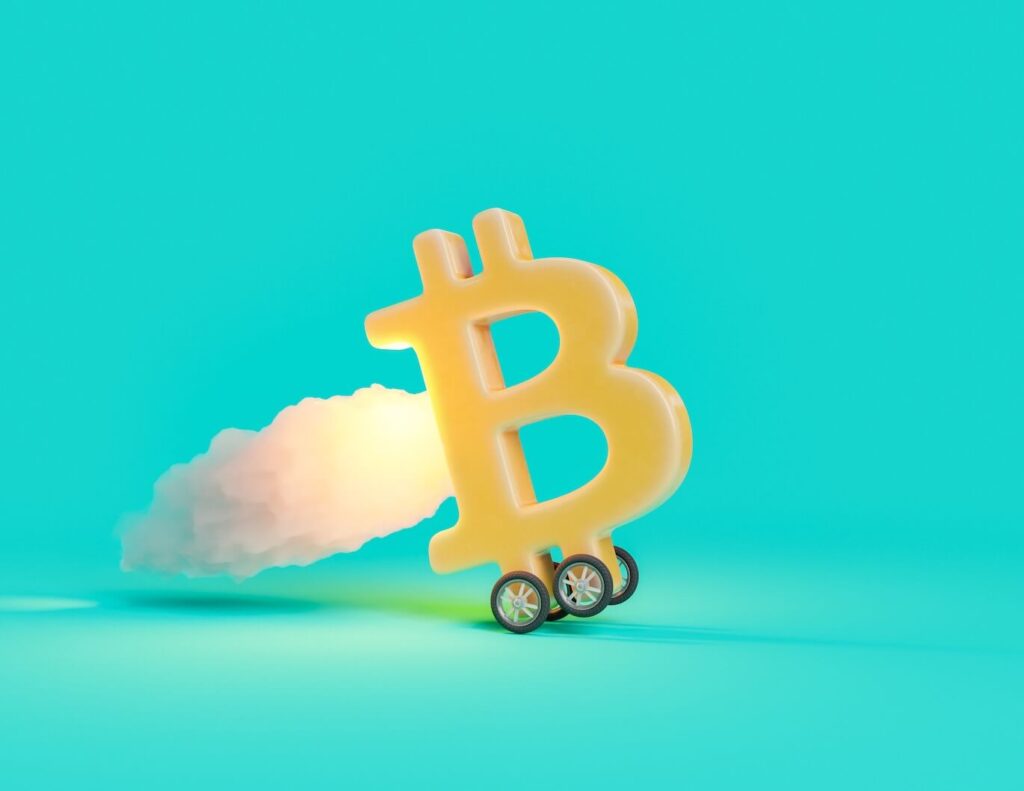In a world driven by technological advancements, the art industry has experienced a revolutionary transformation through the emergence of Non-Fungible Tokens (NFTs), further enhanced by the cryptocurrency giant. NFTs have not only disrupted the traditional art market but have also opened up new possibilities for artists, collectors, and enthusiasts alike. This article delves deep into the exciting intersection of art and Bitcoin,exploring how NFTs have carved a niche in the creative space and forever changed the way we perceive, own, and value digital art. You may visit https://tesler.software/, a reliable trading platform online.

NFTs and the Digital Renaissance
Redefining Ownership in the Digital Realm
NFTs are unique digital tokens that are built on blockchain technology, enabling creators to represent ownership and authenticity of digital assets. Unlike cryptocurrencies like Bitcoin, which are fungible and can be exchanged on a one-to-one basis, NFTs are indivisible and carry metadata that certifies their uniqueness. This has provided artists with the ability to tokenize their digital creations, effectively bridging the gap between physical and digital art ownership.
Empowering Artists Through Smart Contracts
One of the most compelling aspects of NFTs is the integration of smart contracts, which are self-executing agreements with the terms of the contract directly written into code. This innovation empowers artists by enabling them to receive royalties automatically every time their NFT is sold or traded in the secondary market. This revolutionizes the art industry, as artists can now benefit from the appreciation of their work long after the initial sale.
Bitcoin’s Role in the NFT Ecosystem
Bitcoin as a Store of Value
Bitcoin, the pioneering cryptocurrency, has played a pivotal role in the rise of NFTs. As a decentralized digital currency, Bitcoin has established itself as a store of value, drawing parallels with art’s intrinsic value. This synergy has attracted both traditional art investors and tech-savvy enthusiasts to explore the world of NFTs.
The Rise of Bitcoin-Backed NFTs
In recent years, we’ve witnessed the emergence of Bitcoin-backed NFTs, combining the stability of Bitcoin with the uniqueness of NFTs. These hybrid tokens are backed by a certain amount of Bitcoin, ensuring a tangible value while maintaining the benefits of blockchain authenticity. This innovation has created a dynamic bridge between the cryptocurrency and art communities.
NFTs: Beyond the Canvas
Exploring Diverse Creative Mediums
While NFTs initially gained popularity in the world of digital art, their impact has expanded across various creative domains. Musicians, writers, gamers, and even virtual real estate developers have embraced NFTs to tokenize and monetize their creations. This diversity has transformed NFTs into a versatile tool for artists to explore new revenue streams and showcase their work.
NFT Galleries and Virtual Exhibitions
Traditional art galleries have evolved into virtual NFT galleries, offering immersive online experiences that cater to global audiences. These galleries enable artists to curate exhibitions in virtual spaces, breaking down geographical barriers and democratizing art access. The combination of NFTs and virtual galleries has revitalized the art scene, making it more inclusive and interactive.
The Challenges and Future Prospects
Environmental Concerns and Sustainability
Despite the numerous advantages, the energy-intensive nature of blockchain technology, particularly in Bitcoin mining, has raised environmental concerns. The carbon footprint associated with NFTs and Bitcoin has sparked debates within the art community. Efforts are being made to develop more eco-friendly solutions, highlighting the need for sustainable practices in the digital art realm.
Evolving Regulations and Market Dynamics
As the popularity of NFTs (Non-Fungible Tokens) continues to surge, regulatory bodies are confronted with the intricate task of establishing a comprehensive legal structure to oversee this swiftly advancing domain. Within this swiftly evolving landscape, several intricate matters such as intellectual property rights, taxation, and conflicts related to ownership demand meticulous examination and resolution. The ever-changing characteristics of NFTs, coupled with their interaction with cryptocurrencies like Bitcoin, underscore the need for flexible regulations that can guarantee an equitable and open marketplace.
Conclusion
The convergence of art and Bitcoin through NFTs marks a new era of artistic expression and ownership. This transformative technology has empowered creators, reshaped traditional art paradigms, and opened doors to unprecedented possibilities. From Bitcoin-backed NFTs to virtual exhibitions, the fusion of blockchain and creativity has ignited a wave of innovation that promises to redefine the art industry for years to come.

